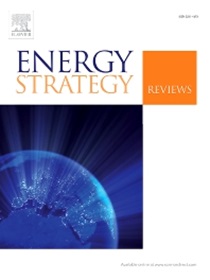Pathways for reducing carbon emissions in county-level transportation: A life cycle perspective and multi-scenario analysis
IF 7.9
2区 工程技术
Q1 ENERGY & FUELS
引用次数: 0
Abstract
Energy-related carbon emissions from the transportation sector are one of the major obstacles to achieving global carbon reduction targets. Current research on transportation energy mainly focuses on the energy end-use stage, with a lack of simulations covering both the front-end and end-use stages of transportation energy. This study, from a life-cycle perspective, conducts a carbon emission simulation for county-level transportation. Based on the 2019 transportation data of Huadu District, Guangzhou, the study combines life-cycle assessment (LCA) with the Low Emission Analysis Platform (LEAP) to simulate changes in transportation carbon emissions from 2020 to 2050. The results indicate that: (1) The Energy-Saving scenario has the greatest carbon reduction potential, capable of reducing carbon emissions by 75 %. (2) Energy efficiency factors have the most significant carbon reduction effect in transportation. (3) There is a carbon transfer phenomenon from "Tank-to-Wheel" to "Well-to-Tank" in transportation energy. (4) Embodied carbon accounts for 40 %, while operational carbon accounts for 60 % of the entire transportation energy life cycle. Based on the above results, the study suggests that the government should increase policy support and technological innovation, invest in public transportation infrastructure, and strengthen carbon management throughout the entire lifecycle to comprehensively enhance the carbon emission reduction effects of transportation energy.
减少县级交通碳排放的途径:生命周期视角和多情景分析
交通运输部门与能源相关的碳排放是实现全球碳减排目标的主要障碍之一。目前对交通能源的研究主要集中在能源的最终使用阶段,缺乏涵盖交通能源前端和最终使用阶段的模拟。本研究从全生命周期角度对县级交通进行碳排放模拟。以广州市花都区2019年交通运输数据为基础,结合全生命周期评价(LCA)和低排放分析平台(LEAP),模拟了2020 - 2050年交通运输碳排放的变化。结果表明:(1)节能情景的碳减排潜力最大,可减少75%的碳排放。(2)能效因子在交通运输领域的碳减排效果最为显著。(3)运输能源存在从“罐到轮”到“井到罐”的碳传递现象。(4)在整个交通能源生命周期中,隐含碳占40%,而运行碳占60%。基于以上研究结果,建议政府应加大政策支持和技术创新力度,加大公共交通基础设施投资力度,加强全生命周期碳管理,全面提升交通能源的碳减排效果。
本文章由计算机程序翻译,如有差异,请以英文原文为准。
求助全文
约1分钟内获得全文
求助全文
来源期刊

Energy Strategy Reviews
Energy-Energy (miscellaneous)
CiteScore
12.80
自引率
4.90%
发文量
167
审稿时长
40 weeks
期刊介绍:
Energy Strategy Reviews is a gold open access journal that provides authoritative content on strategic decision-making and vision-sharing related to society''s energy needs.
Energy Strategy Reviews publishes:
• Analyses
• Methodologies
• Case Studies
• Reviews
And by invitation:
• Report Reviews
• Viewpoints
 求助内容:
求助内容: 应助结果提醒方式:
应助结果提醒方式:


